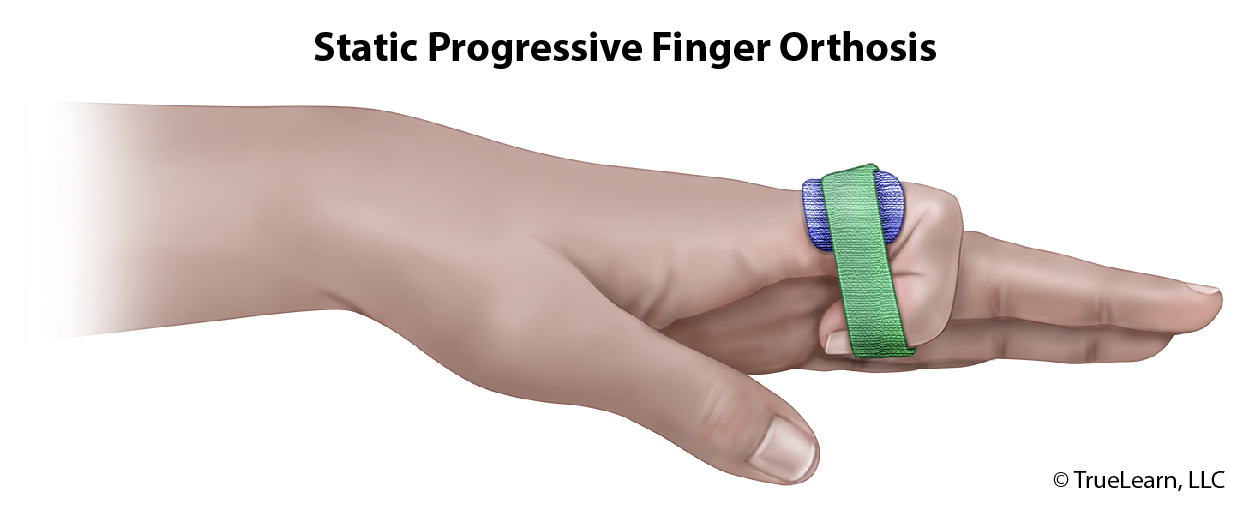Tackle a Free Occupational Therapy Exam Practice Question
Put what you know to the test with a high-yield occupational therapy exam question right from the OT SmartBank!
TrueLearn’s SmartBanks go beyond typical q-banks, providing NBCOT®-style practice questions with detailed explanations to enhance your understanding—not just for the OTR® exam, but for your career ahead.
Your First Free Occupational Therapy Exam Practice Question
An occupational therapist is evaluating a client who sustained a superficial laceration to the flexor tendon of the index finger 8 weeks ago. The client did not undergo surgical repair and has been attempting non-surgical management, with limited success. During the evaluation, the therapist observes restricted range of motion in the proximal interphalangeal (PIP) joint of the index finger, specifically flexion, likely due to adhesions and scar tissue at the injury site. What is the MOST appropriate intervention for the occupational therapist to implement with this client?
- A. Fabricate a static progressive finger flexion splint, with the client readjusting the strap as needed
- B. Fabricate a static resting orthosis for the client to wear at night
- C. Apply a dynamic finger orthosis with outrigger and springs for finger extension
- D. Apply moist heat with 4 layers prior to active range of motion (AROM) therapeutic exercises
The Answer and Explanation
Did you get it right? The correct answer is ‘A’.
Flexor tendon lacerations may occur with any cut to the hand, wrist, or arm and can be managed through surgical or non-surgical therapy. Non-surgical treatments include the use of a splint, application of ice to the affected area, and use of anti-inflammatory medications and pain relievers. Surgical treatments often involve the use of stitches or sutures to repair the tendon. Clients who sustain a flexor tendon laceration will require therapy to address active range of motion and strengthening of the impacted digit(s), specifically addressing finger flexion. Often splints or orthotics are implemented to promote stretch and AROM throughout the healing and rehabilitation process.
This client demonstrates reduced active range of motion, specifically flexion, possibly due to adhesions and the formation of scar tissue. Using a static progressive orthosis will allow the client to adjust the strap every 1–3 days or as needed for a slow increase in AROM over a long period of time as tolerated.

Illustration © TrueLearn, LLC
Wrong Answer Explanations
Answer B: The main purpose for a static resting orthosis is to immobilize a joint(s). This client demonstrates reduced active range of motion and therefore would benefit from an orthosis or splint that promotes movement, specifically flexion in the proximal interphalange (PIP) of the index finger.
Answer C: A dynamic orthosis would be inappropriate due to the formation of adhesions and scar tissue. The client demonstrates limited active range of motion for flexion in the proximal interphalange (PIP) of the index finger. Extension is not needed at this time.
Answer D: The correct number of layers for moist heat application is 6–8; AROM would not be possible for this client with a adhesions and scar tissue formation.
Bottom Line
A static progressive orthosis can be utilized when attempting to slowly gain active range of motion over a prolonged period of time.
For more information, see Pedretti’s Occupational Therapy: Practice Skills for Physical Dysfunction, 8th ed. Chapter 30: Orthotics. p.728.


